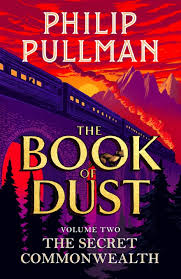Chapter books and novels are order of the day in our reviewing neighbourhood, with three new books targeted at the junior/middle fiction space, and special guest appearance by the latest Philip Pullman. Teacher and former bookseller Annelies Judson shares her takes.
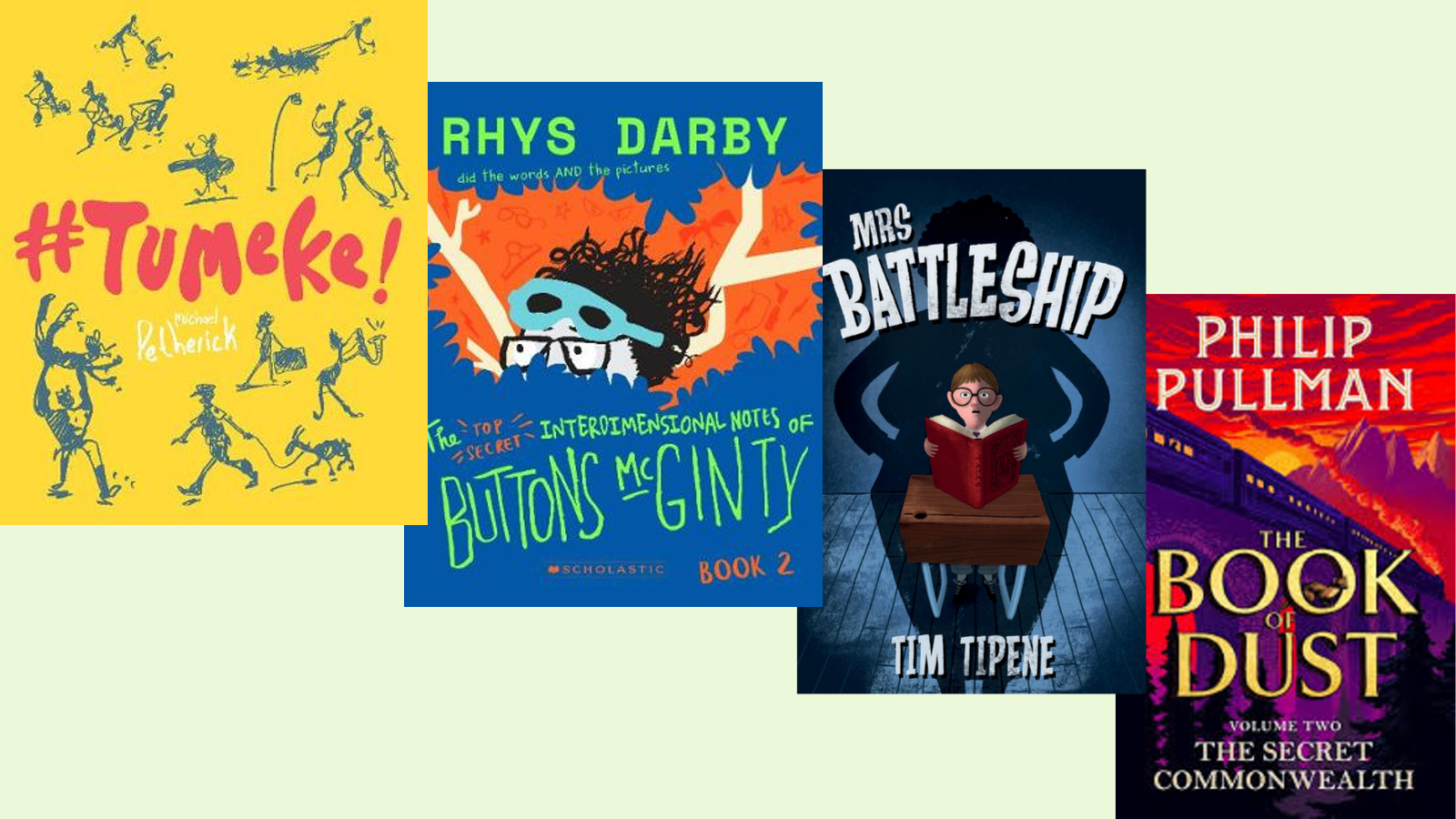
#Tumeke! by Michael Petherick
#Tumeke! is a very different style of book from the traditional picture or chapter books that make up the bulk of the children’s publishing market. Laid out in a scrapbook style, it is full of ‘artefacts’ from the daily life of the characters, including pictures of the local community noticeboard, diary excerpts, emails, drawings, notes and text messages. It is a delight to see a fiction book aimed at the middle reader age with such a unique and visually appealing layout. A quick riffle through the pages should captivate even a relatively unwilling reader.
It is a delight to see a fiction book aimed at the middle reader age with such a unique and visually appealing layout.
Petherick has a lot of respect for this audience. The real digital world of the age group is represented both realistically and as a subject of valid literary worth. The format allows for mocked-up screenshots of message exchanges and posts from various apps, both real and imagined. He also does a fantastic job of writing in the various registers of the different characters, from the formal emails between a teacher and parent, to the hype of an Instagram post from a musician, to the texts between pre-teen characters talking about their band.
The setting is unashamedly Kiwi. From the celebration itself (a school gala for Waitangi Day), through references to Hairy Maclary, lolly cake, Margaret Mahy, EFTPOS and sausage sizzles, to the occasional use of te reo Māori, there is no mistaking this as a book for anywhere but here. The ‘homework assignment’ about Te Tiriti o Waitangi is also a great crib sheet for those who maybe need to brush up on their New Zealand history.
…through references to Hairy Maclary, lolly cake, Margaret Mahy, EFTPOS and sausage sizzles, to the occasional use of te reo Māori, there is no mistaking this as a book for anywhere but here.
The story itself is linear, centred around the inaugural Newtoun School Waitangi Day festival, named Tumeke! (exclamation mark included). However, the nature of the book means that it dips in and out of various characters’ stories, rarely spending longer than a double-page spread on any one aspect of a character’s life. These snippets weave through the book, with crossovers between various characters and storylines, all of which culminate in the successful staging of the Tumeke! festival.
On one hand, this stylistic choice is captivating. As a reader, you feel as though you are a detective, catching a glimpse of something here, a hint of something there. The recurring image of the community noticeboard (complete with new advertisements) is cleverly referenced in other parts of the text. The reader is trusted to put together the pieces of the jigsaw and make the necessary inferences.
The reader is trusted to put together the pieces of the jigsaw and make the necessary inferences.
On the other hand, there are a few storylines that don’t really go anywhere. It feels a little like they have been put in for humorous effect rather than having a strong link to the overall story. There is a certain joy in these little details, and they don’t detract from the story, but nor do they support it particularly. There are also a few jokes that I suspect may go over the heads of even the most sophisticated readers – the over-involved parent, the jaded notes from teachers, the Lord of The Rings and Beatles Appreciation Society – though as a teacher and parent myself I have to say I did laugh at all of them.
Kate de Goldi, one of the founders of Annual Ink, said that they intend to publish ‘books that create adventurous, thoughtful readers, books that relish language and ideas.’ #Tumeke! does this job perfectly.
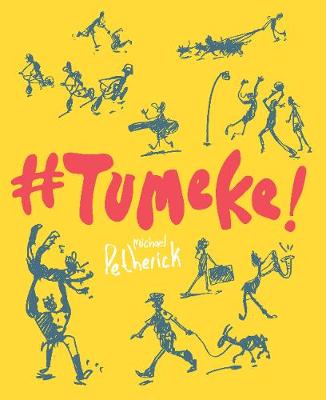
The Top Secret Interdimensional Notes of Buttons McGinty, by Rhys Darby
Whew! The Top Secret Interdimensional Notes of Buttons McGinty is a rollicking runaway train ride of a book. The book follows the titular Buttons McGinty as he pops out of a portal and travels through another world to try and find his missing parents, who have been taken by Buttons’s evil school principal, Sir Bob Knobkeppling.
The Top Secret Interdimensional Notes of Buttons McGinty is a rollicking runaway train ride of a book.
In order to find them, Buttons uses the help of Ron Lozenger (part-time stand-up comedian, part-time eye mask and map seller), an unusual temple-dwelling man by the name of Dean (or De) Classified, and a forest warrior-cum-postie called Hunu, who bears a passing resemblance to Xena. His friends from boarding school, who feature in the previous book, The Top Secret Undercover Notes of Buttons McGinty, also come through the portal in order to assist Buttons in his quest.
The book is styled as a journal in the same vein as Diary of a Wimpy Kid. It includes little asides, drawings and commentary, as well as journal entries – indeed, the main character is writing the story sometimes literally as the action happens. This gives it a constant sense of forward momentum, sometimes so much so that as the reader you feel like you don’t really get a chance to stop and catch your breath. This is heightened by the fact that there isn’t a lot of tension in the book. Setbacks are resolved quickly, sometimes hilariously easily. This is very much in keeping with the vibe of the book – the joy of the ridiculous is the order of the day – but it certainly adds to the sense of inertia in the way the reader is pulled through the story.
…indeed, the main character is writing the story sometimes literally as the action happens.
It’s also got a lot of elements of ‘kid humour’, including fart jokes, a gang of old ladies who steal things (‘The Notorious Nana Gang’) and a misunderstanding between Buttons and (spoiler alert) his father, who says he doesn’t know the temple-dwelling man’s name because he was told it was ‘Classified’. As an added bonus, there are messages of Morse code dotted throughout the book (complete with a Morse code list on the final page), which makes for a great added interactive reading experience for kids who like that kind of thing.
The story reads a lot like it’s been taken from the primary school writing book of a child with a wild imagination. It’s improbable and ridiculous, and there are some complete irrelevancies that seem to have been put in for the sake of humour and/or the lack of an editor to question the decision.
The story reads a lot like it’s been taken from the primary school writing book of a child with a wild imagination.
But despite those quibbles, it reads well, and it will absolutely appeal to the primary school children who wish their teachers would let them write exactly this kind of story.
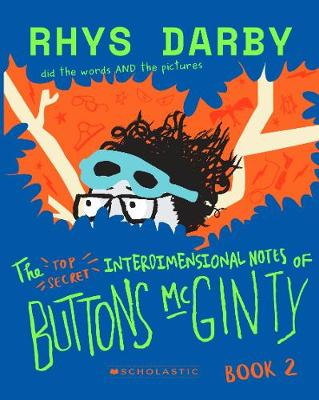
The Top Secret Interdimensional Notes of Buttons McGinty
by Rhys Darby
Scholastic NZ
RRP $17.99
Mrs Battleship, by Tim Tipene
Tim Tipene is the author of a range of books, many of which deal with topics that were central to his childhood: bullying, absent family and how to overcome life’s difficulties. Mrs Battleship is steeped in the same lessons, only this time the stories are autobiographical.
The book is a series of vignettes – various significant memories, mainly centred on his primary school years, with a couple of later stories dealing with high school and adulthood. A number of the stories talk about his teachers. Two focus on the Miss Honey-esque Miss Foote, who reads out one of Tipene’s stories to the class, becoming the first person in Tipene’s life to acknowledge his skill at writing (or indeed, his skill at anything). Three others cover ‘The Battleship’, the playground name for teacher Mrs Battersby, who finds out about Tipene’s abusive home life and supports him in his schoolwork. Tipene places a lot of significance on the long-term effect these teachers had on his motivation and belief in himself. In fact, there is a picture of an adult Tipene with an elderly Yvonne Battersby at the end of the third story.
Tipene places a lot of significance on the long-term effect these teachers had on his motivation and belief in himself.
Most of the other stories talk about his family. His abusive and neglectful parents each get their own chapter, as well as playing a side role in some of the other stories. Their abuse of Tipene and his eventual choice to make a better life for himself is what underpins the whole book. As Tipene says in a final ‘letter’ to the reader at the end: ‘My childhood was scary and damaging, yet I chose to have a wonderful future, and I make that choice every day.’
The stories neatly capture the voice of Tipene as a child. He puts himself back in his own shoes and tells the story looking out from his own five-, ten- or twelve-year-old eyes. The sentence structures are relatively simple, as is most of the vocabulary. Each is short, only five or six pages, sometimes less.
He puts himself back in his own shoes and tells the story looking out from his own five-, ten- or twelve-year-old eyes.
Most of the stories also have asides from the adult Tipene, reflecting on what happened and making commentary on why each moment was significant or what it felt like to be treated in these different ways. This creates a challenge in terms of the intended audience of the book.
The typesetting, length and general style of the book look firmly ‘middle reader’. However, the content wouldn’t be suitable for this age group, particularly not in this format. The use of words like ‘traumatised’, the direct references to being physically abused (especially considering that these are real stories), and the discussion of the ways in which an abused child tries to hide their abuse, put this outside of the grasp of most middle readers. And for those of that age who do relate to the stories, the adult metacognitive reflection about the events in the book will likely go over their heads, preventing them from gleaning the hopeful message which is intended to underscore the whole book.
Tipene does do school talks with students of a range of ages, and I suspect that many of these stories work well in that arena. It is quite different, though, putting stories across to children in a written format. For an older reader with low literacy skills, this book would be perfect. It is real, it has moments of humour, and it is ultimately hopeful. But overall, it is a book that doesn’t quite hit the mark in terms of matching content and audience.
For an older reader with low literacy skills, this book would be perfect.
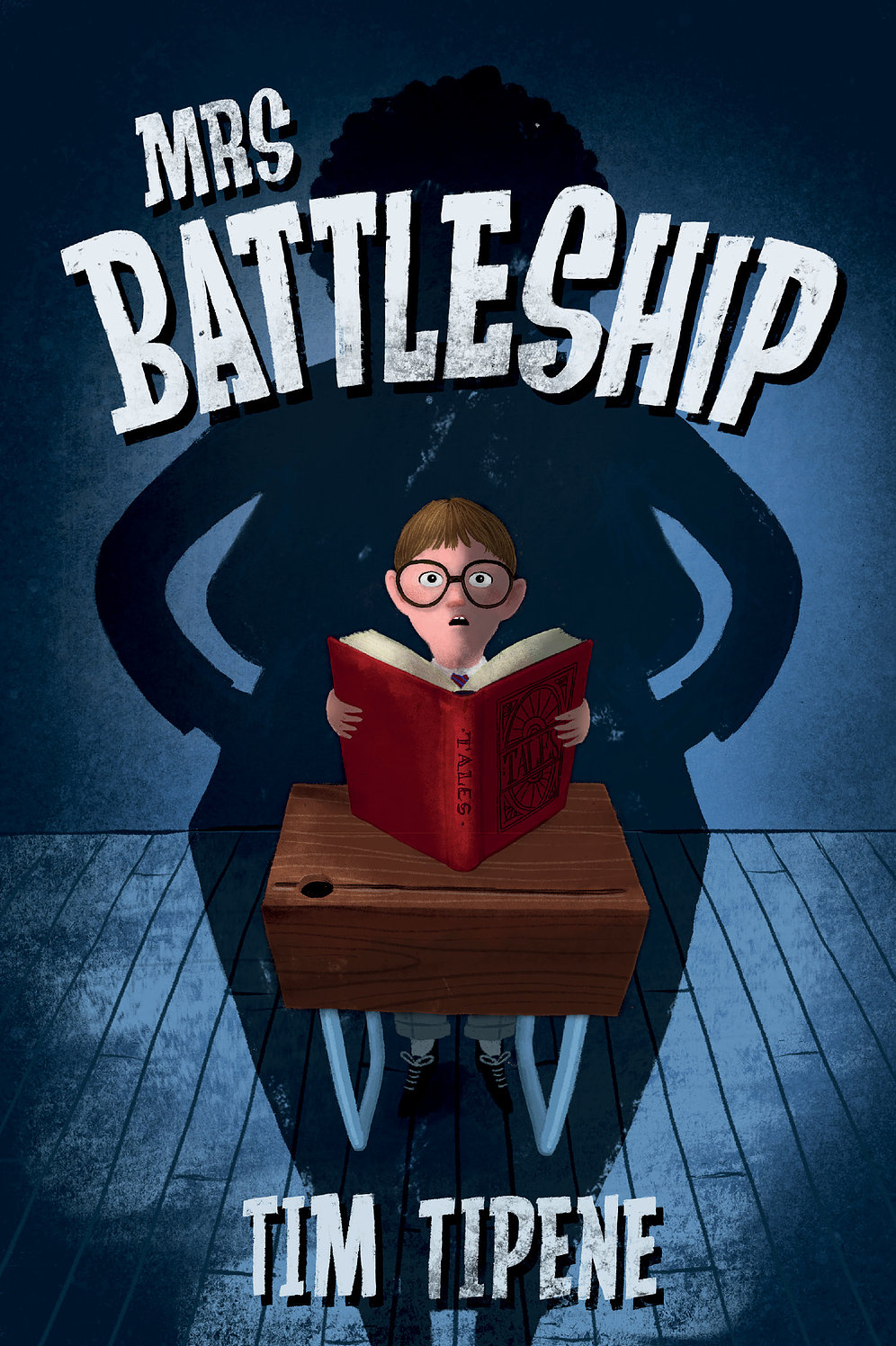
The Book of Dust Volume 2: The Secret Commonwealth, by Philip Pullman
The second of Philip Pullman’s Book of Dust trilogy is an absolute doorstopper of a book. Coming in at just under 700 pages, it is clear that Pullman is relying on a captive audience of fans who are not going to be put off by its bulk.
But Pullman has those in spades. The His Dark Materials trilogy was an international bestseller. The story of Lyra and her fight against the shadowy Magisterium (representing the evils of fundamentalist religion) was a crossover success, captivating adults and children alike. In 2017, Pullman released the first volume of the highly anticipated The Book of Dust, entitled La Belle Sauvage, as a prequel to the events of His Dark Materials. In this story, Lyra is a baby, and the protagonist is instead an 11-year-old boy named Malcolm, who has to keep Lyra safe from the long arm of the Magisterium by sailing her through a flood. This too was a critical and publishing success.
All four books in the series so far are complexly woven tales. The cast of characters is wide and varied, from Lyra herself, to talking armoured bears, scholars at universities, witches and the ever-present dæmons, which in Lyra’s world are physical manifestations of a person’s selfhood in the form of animals. Each story is a combination of wide-ranging adventures, political intrigue, personal discovery and loss, and the fight of good versus evil.
The cast of characters is wide and varied, from Lyra herself, to talking armoured bears, scholars at universities, witches and the ever-present dæmons…
The storyline of The Secret Commonwealth does not disappoint. It starts with Lyra in Oxford, where she and her dæmon Pantalaimon are emotionally estranged. Lyra has been captivated by the scholarly pursuit of reason and logic, and is particularly in thrall to two authors whose books take a position of fundamentalist rationalism.
Pantalaimon, upset by their constant unease with each other, puts it down to these books, and decides to, as he puts it, ‘go and look for Lyra’s imagination’ by tracking down the author of one of the titles. Unlike most people in their world, Lyra and her dæmon can be physically separated over long distances, so Pantalaimon’s departure not only causes Lyra emotional heartbreak, but also creates the awkwardness of having to hide from other people the fact that she is ‘incomplete’. And so starts Lyra’s journey to find Pantalaimon, which takes up the bulk of the second half of the book.
Meanwhile, in true-to-Pullman form, a political storm is brewing. The Magisterium’s power is increasing, and the Machiavellian Marcel Delamare is setting himself up behind the scenes to be in control. At the same time, he and some associates are also trying to chase Lyra and Pantalaimon down. Malcolm (hero of the first book) is also involved: now a professor at Oxford, he is working for an underfunded secret service, which entails both keeping an eye on Lyra, trying not to have feelings for her, and also fighting against the Magisterium itself.
Meanwhile, in true-to-Pullman form, a political storm is brewing.
What is different about this book is that Lyra is an adult. Gone is the youthful naivety of the main characters that left the reader to read between the lines about Pullman’s critique of organised religion. Instead we get a 20-year-old who spends a lot of the book pondering about philosophy and the nature of existence. It feels didactic. And adult.
In reality, this is not a kids’ book. At all. Pullman himself admits that this book is going to attract a much more adult audience, but that doesn’t negate the fact that this is marketed as part of a young adult series, and it feels like the publishers haven’t been able to admit to themselves that the series has moved into another age bracket completely. Unlike Harry Potter, which grew with its audience but avoided anything directly adult, The Secret Commonwealth has swearing, references to sexual relationships, and in a relatively horrifying scene, an attempted rape by some soldiers on Lyra.
…it feels like the publishers haven’t been able to admit to themselves that the series has moved into another age bracket completely.
For fans of Pullman, this book is a good enough, though I do feel it’s the weakest so far. But for those who are hoping to instil a love of Philip Pullman in their children, stick to His Dark Materials and save this one for their 21st.
